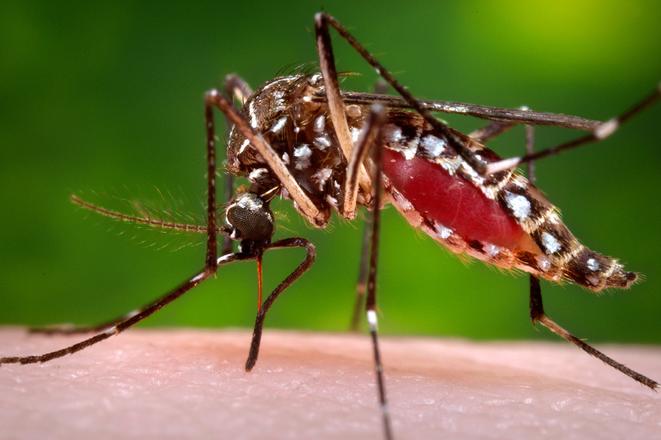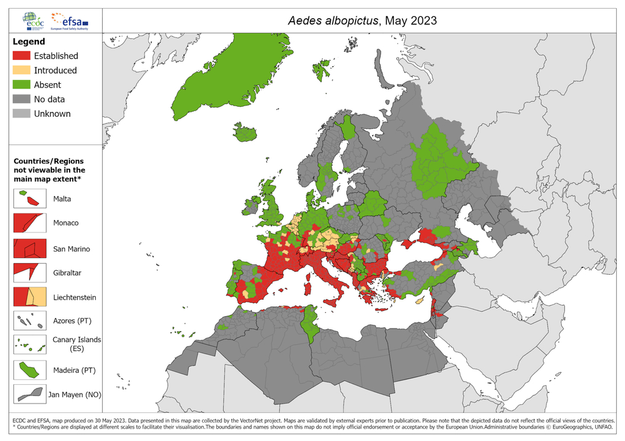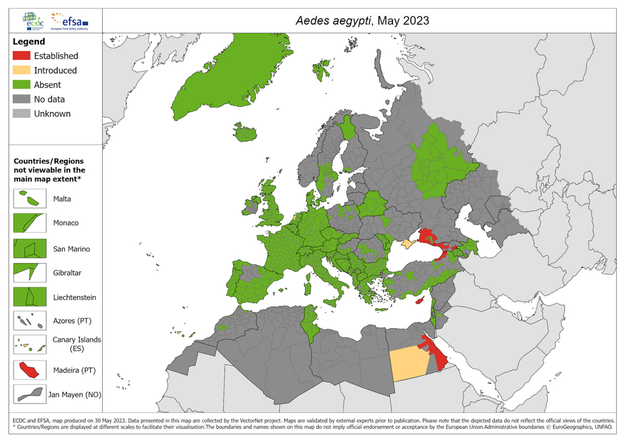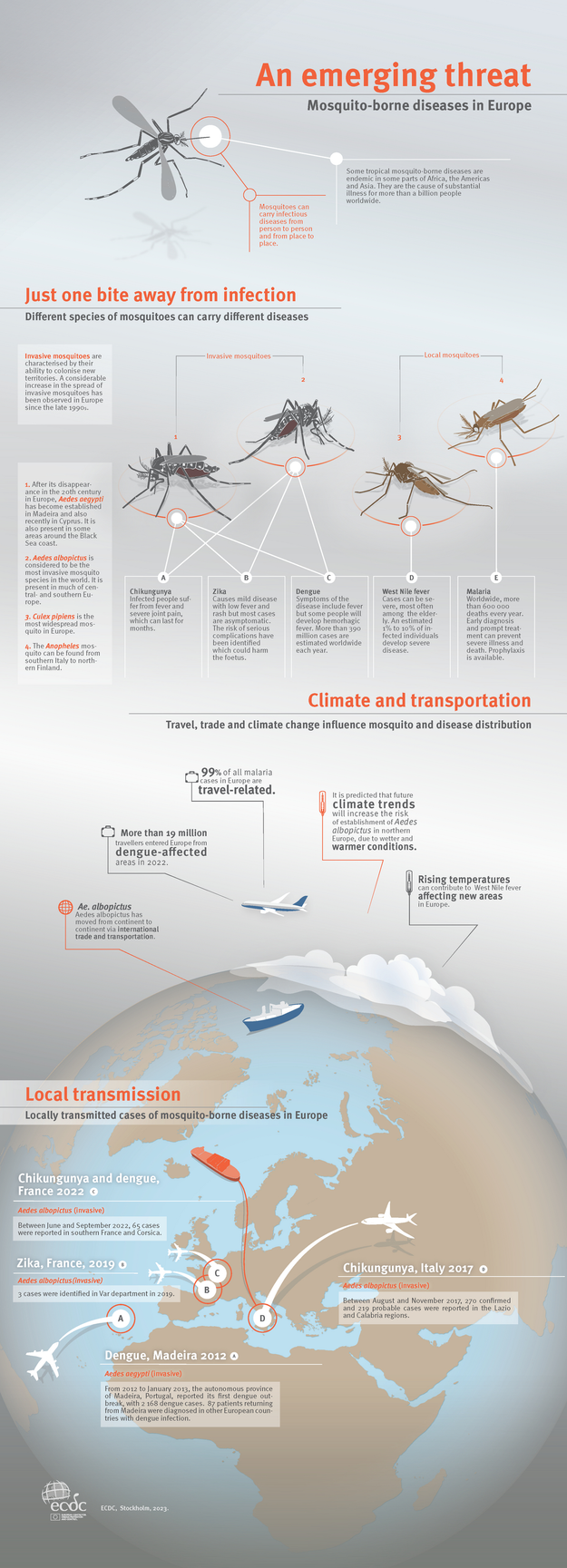Mosquitoes capable of transmitting dangerous tropical diseases, such as malaria, West Nile fever and dengue fever, are starting to show up in Slovakia.
One such species is the tiger mosquito, which has reached Košice Region from Hungary, where, according to the European Centre for Disease Prevention and Control (ECDC), it has now become established (meaning the mosquitoes are able to overwinter and reproduce there).
The species is partially resistant to chemical spraying, although higher doses of insecticides are effective. The tiger mosquito is classed as an invasive species in Slovakia and differs from domestic mosquito species in its characteristic colouring – it has white stripes and dots on its dark body.
Originally hailing from southeast Asia, it has gradually spread to other parts of the world.
According to experts, its ability to overwinter in Hungary is further evidence of climate change and global warming. Rising temperatures are expected to allow the species to move further north in Europe.
Another problematic species is the yellow fever mosquito. Many specimens in Asia have developed mutations that make them extremely resistant to insecticides used to control the species.
Unlike the tiger mosquito, the latter has not yet become widespread in Europe, although according to the ECDC report it is now established in Cyprus.
Mosquitoes live in warm and humid environments, so their season begins in summer and, depending on outside temperatures, can continue until late autumn.
Strong storms accompanied by torrential rains, such as those that hit Slovakia last week, bring danger not only in the form of increased river levels and floods, but also in the form of an overpopulation of mosquitoes that breed in the resulting stagnant water or in close proximity. Heavy rain can create puddles that last for several days or even weeks.



 Stock image. (source: AP/SITA)
Stock image. (source: AP/SITA)
 The mosquito species Aedes albopictus (tiger mosquito), a known vector of chikungunya and dengue viruses, is establishing itself further northwards and westwards in Europe, according to the latest data from ECDC. (source: ECDC)
The mosquito species Aedes albopictus (tiger mosquito), a known vector of chikungunya and dengue viruses, is establishing itself further northwards and westwards in Europe, according to the latest data from ECDC. (source: ECDC)
 Aedes aegypti (yellow fever mosquito), known to transmit dengue, yellow fever, chikungunya, zika and West Nile viruses, has been established in Cyprus since 2022 and may continue to spread to other European countries. (source: ECDC)
Aedes aegypti (yellow fever mosquito), known to transmit dengue, yellow fever, chikungunya, zika and West Nile viruses, has been established in Cyprus since 2022 and may continue to spread to other European countries. (source: ECDC)
